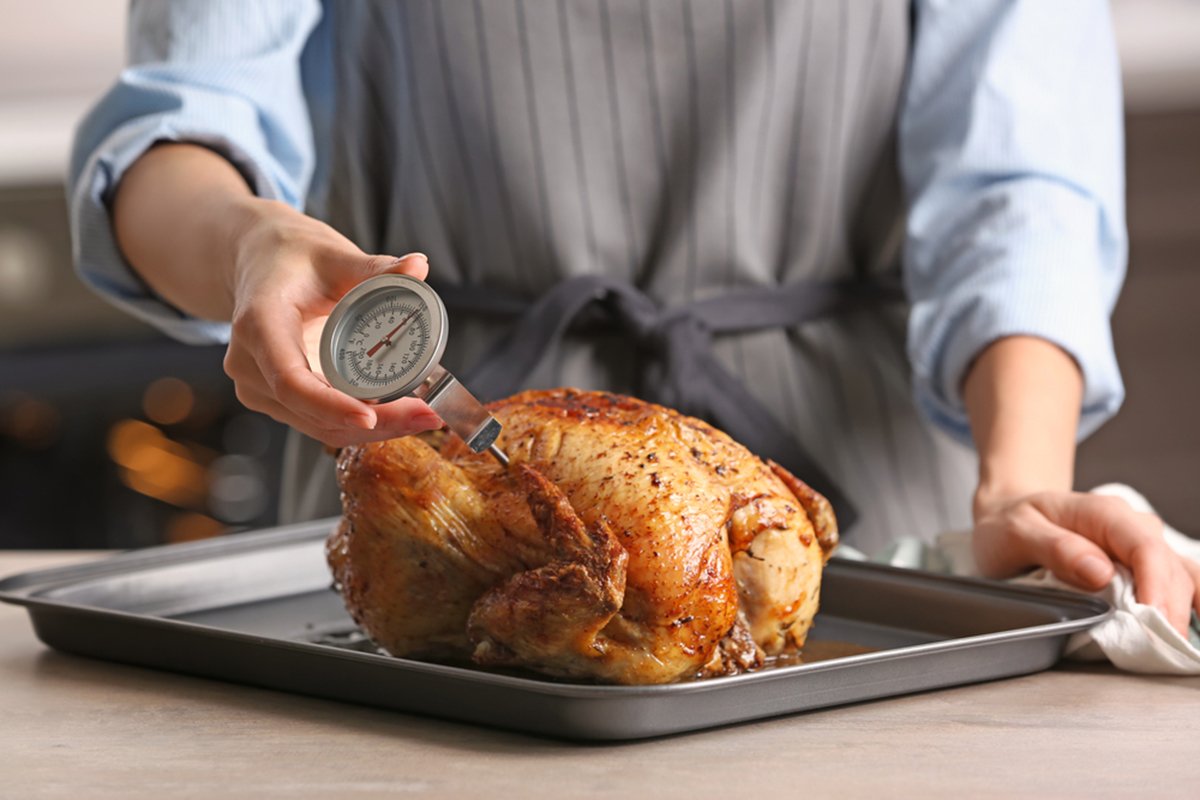
Salmon met Ella at the grocery store. They really hit it off right from the beginning. So, when they came home and Sally left the frozen chicken on the counter overnight to thaw, Salmon and Ella became Salmonellae, and their family became ill with vomiting, abdominal cramps, diarrhea, fever, chills, headache, and blood in the stool.
This story illustrates the importance of food safety in the kitchen. The bacteria Salmonella is naturally present in all poultry products. Bacteria is, in fact, naturally occurring most everywhere, as well as the common cold virus in the air. Salmonella is killed in the cooking processes when refrigerated poultry is cooked. Should Sally have thawed her frozen chicken in the refrigerator, her family would not have become ill.
Best Practices For Good Health Include:
- Maintaining a distance of at least six feet from other persons
- Wearing a face covering in public
- Not sharing items that can’t be cleaned or sanitized after use, and avoiding sharing frequently touched items.
- 20 seconds of hand washing before and after eating, after using the toilet and when in a public restroom use a dry paper towel to open the door on your way out. Scrub the backs of your hands, between your fingers, and under your nails.
- Rinse fruits and vegetables: Wash fruits and vegetables before peeling. Germs can spread from the outside to the inside of fresh produce as you cut or peel.
- Cook shellfish thoroughly
- Do not wash raw meat, poultry, or eggs. Washing these foods can actually spread germs because juices may splash onto your sink or counters.
- Stay home when sick and for two days after symptoms stop
- Avoid preparing food for others when sick and for two days after symptoms stop
Virus spreads from infected people to healthy people and from touching contaminated foods and surfaces; from having direct contact with an infected person, such as shaking hands; sharing food or eating utensils with an infected person; and by consuming contaminated food or water. Young children explore and understand their world often by putting things in their mouths. So, it is important to impress upon them that water should come from the kitchen or grocery store.
Your kitchen is filled with food safety tools that, when used properly, can help keep you and your loved ones healthy. Learn how to make the most of these tools, such as spraying the counters with a solution of 1 tsp household bleach to 1 gallon of water. If washing surfaces with soap and water, rinse thoroughly. Soap residue causes diarrhea.
- Use separate cutting boards, plates, and knives for produce and for raw meat, poultry, seafood, and eggs.
- Clean with hot, soapy water or in the dishwasher (if dishwasher-safe) after each use.
- Use a food thermometer to make sure food cooked in the oven or on the stove top or grill reaches a temperature hot enough to kill germs.
Safe Minimum Cooking Temperatures:
- All poultry, including ground: 165°F
- Ground beef, pork, lamb, and veal: 160°F
- Beef, pork, lamb, and veal chops, roasts and steaks: 145°F (let rest 3 minutes before serving)
- Fish: 145°F
Other Best Practices:
- When reheating cooked foods in a microwave, use a food thermometer to make sure that microwaved food reaches an internal temperature of 165°F.
- Keep your refrigerator between 40˚F and 32˚F, and your freezer at 0˚F or below.
- Refrigerate fruits, vegetables, milk, eggs, and meats within 2 hours. (Refrigerate within 1 hour if the temperature outside is above 90ºF.)
- Divide warm foods into several clean, shallow containers so they will chill faster.
- Store raw meat on the bottom shelf away from fresh produce and ready-to-eat food.
- Thaw or marinate foods in the refrigerator.Best practices such as these can be found at https://www.cdc.gov/foodsafety/keep-food-safe.html.
Best practices such as these can be found at https://www.cdc.gov/foodsafety/keep-food-safe.html.

